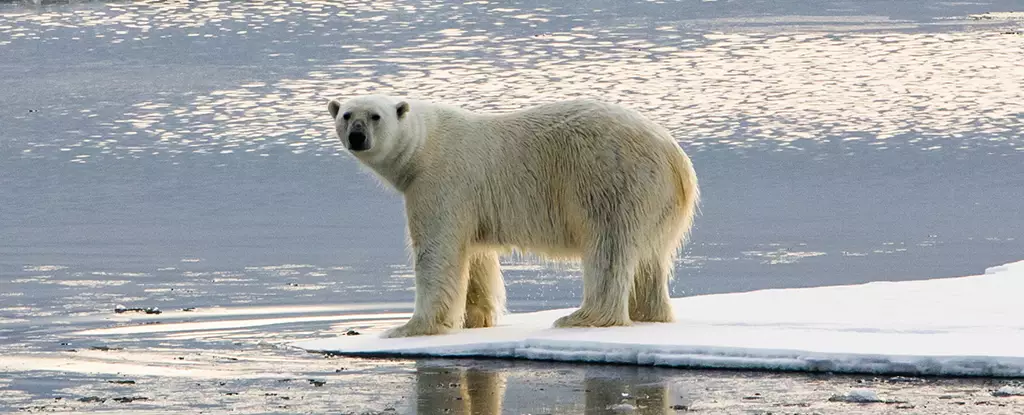The phenomenon known as the Last Ice Area (LIA) represents a shrinking sanctuary within the Arctic, where ice has historically persisted throughout the year despite the insidious effects of global warming. This region, identified primarily around the Queen Elizabeth Islands and the Canadian Arctic Archipelago, is home to unique ecosystems that countless species, including polar bears and seals, depend upon. Yet, a recent in-depth study led by researchers from McGill University reveals that this vital habitat may be at greater risk than previously estimated.
Through the deployment of the Community Earth System Model, the team was able to generate more nuanced and detailed projections than earlier models. Prior assessments based on less comprehensive simulations had painted a more optimistic picture, suggesting that the last remnants of permanent sea ice might endure for several decades despite seasonal ice-free periods becoming commonplace. However, the latest findings indicate that we may only have a short window left to observe these ice formations.
According to the data from McGill University scientists, the landscape of the Arctic ice is likely to change dramatically in the coming years. They predict that the central Arctic Ocean could become seasonally ice-free annually as early as 2035, with the LIA’s permanent ice receding similarly within 6 to 24 years following this point. Such a rapid timeline for the disappearance of ice raises urgent alarms about the fate of Arctic wildlife and the delicate balance of this ecosystem.
One of the study’s authors, atmospheric scientist Bruno Tremblay, emphasized the importance of high-resolution models that consider more variables, particularly sea ice transport through regions like the Canadian Arctic Archipelago. These findings underscore the interconnectedness of ice regions and indicate that the northern part of the LIA plays a pivotal role in maintaining sea ice conditions. Its ability to block ice flow from other parts of the Arctic ultimately affects the sustainability of the Last Ice Area.
The implications of the LIA’s deterioration span far beyond environmental statistics; they directly threaten wildlife that is reliant on stable ice conditions. For example, approximately a quarter of the world’s polar bears inhabit or roam near the LIA, a region critical for their life cycle and hunting practices. With the development of seasonal ice-free periods, polar bears and seals are facing habitat loss, disrupted breeding patterns, and, ultimately, existential danger.
Footage from documentaries such as *Our Planet* has illustrated the dire situations faced by Arctic wildlife. Walruses, for instance, have been reported to fall to their deaths while attempting to climb cliffs in search of ice that no longer exists. This stark reality points to the potential for widespread species endangerment, with previously abundant marine life shifting closer to a perilous designation.
Furthermore, Indigenous communities that traditionally rely on the Arctic’s ice for subsistence hunting are similarly affected. The LIA isn’t just a natural wonder; it is interwoven with cultural practices and livelihoods that stand to suffer as ice retreats.
The potential crisis of the LIA has prompted immediate calls for comprehensive protective measures. One significant development has been the establishment of the Tuvaijuittuq Marine Protected Area (MPA) by the Canadian government, designated as a sanctuary where “the ice never melts,” according to its Inuktut name. Such initiatives aim to safeguard the biodiversity of the region, but they must be reinforced by global commitments to address climate change.
McGill University scientist Madeleine Fol underscored the urgency conveyed by this research, stressing the importance of mitigating warming trends to maintain stable habitats within the Last Ice Area. The intersectionality of climate change with Arctic ecosystems calls for immediate action.
The fate of the Last Ice Area is not just an environmental issue; it is a clarion call for humanity to re-evaluate its relationship with nature. As we confront this urgent challenge, collaborative action across nations, scientists, governments, and communities becomes paramount to preserving this iconic region and the life it supports. Keeping the Last Ice Area sustainably intact may be one of the many steps needed to combat the broader implications of climate change and ensure a balanced ecological future for generations to come.


Leave a Reply